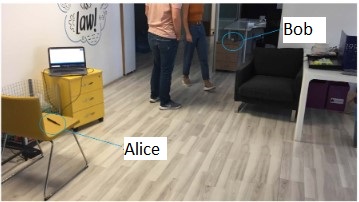A Physical Layer, Zero-Round-Trip-Time, Multifactor Authentication Protocol
Lightweight physical layer security mechanisms such as Physical Unclonable Functions (PUFs), RF fingerprinting, and Secret Key Generation (SKG) from wireless fading have gained considerable attention in recent years. The paper titled “A Physical Layer, Zero-Round-Trip-Time, Multifactor Authentication Protocol” by Miroslav Mitev, Mahdi Shakiba-Herfeh, Arsenia Chorti, Martin Reed and Sajjad Baghaee presents a novel zero-round-trip-time (0-RTT), multi-factor authentication protocol that, for the first time, integrates PUFs, proximity estimation, and SKG into a unified, privacy-preserving framework. The proposed scheme leverages real-world indoor Received Signal Strength (RSS) measurements, using Kalman filters to extract soft proximity-based fingerprints for authenticating nodes. By exploiting node mobility, a diversity of fingerprints is gathered to enhance robustness against impersonation attacks such as false base stations.

After isolating the proximity component, the residual RSS signals serve as a high-entropy source for symmetric key generation, which is then used as a resumption secret in a fast, secure authentication phase. This dual-purpose design is embedded within a PUF-based challenge–response protocol, ensuring mutual authentication. The security of the protocol is rigorously validated through formal analysis using Burrows–Abadi–Needham (BAN) and Mao–Boyd (MB) logic, as well as Tamarin-prover-based symbolic verification.
Overall, the proposed protocol demonstrates that purely physical-layer, fast, and secure authentication schemes are not only viable but may serve as lightweight and infrastructure-independent alternatives to public-key systems in future wireless networks.
